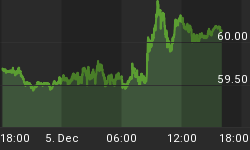The Fed will probably rise rates in December. Hikes should be a gradual, while the monetary policy will remain accommodative. What could happen to the US stocks and the US dollar?
The US dollar could decline in 2016
The decision was somehow anticipated during the FOMC minutes of 27 and 28 October, when members stressed inflation was turning around and current weak numbers were only related to the slump of oil prices and the strong US dollar. In fact, in October, the consumer price index declined while inflation was up 0.2% year-on-year. It rose 1.9% excluding food and energy, the larger move since June 2014. Economic conditions will still be scrutinized for the longer-term prospective, worldwide geopolitical tensions could pose a serious challenge to economic growth in 2016, but most Fed officials do now agree that there are the right conditions for the first rate hike in nine years. Nonetheless, they will be gradual, as the whole risk stays on the downside, considering poor labor participating and weak productivity. As a result, Fed funds should increase, but monetary policy will stay supportive to growth.
Over the short term, stocks should continue their rebound. The next target for the S&P 500 index could be 2100 then eventually 2170. Then, a period of consolidation is possible, although the long-term trend remains bullish for stocks. Instead, the US dollar might be close to an important top. Why? A rate hike has been largely discounted in currently prices. In addition, during the past 40 years, the US dollar has manifested the tendency to trend for about 17% (top to bottom) against other currencies and then to correct about 40% of the entire move. Since 2014, the US dollar index rose for about 20% to 100. As a result, in 2016, the US dollar index could decline to 94/92 considering also the huge technical reversal pattern currently in formation. The correction should only be temporary, as long-term fundamental conditions, such as favorable rate differentials with other countries, still point to the upside for the greenback.
The US are still resilient, despite signs of weakness
With just below 230,000 new jobs registered in August and September, the private sector has stalled this past summer. Construction and manufacturing were hit somehow, but the big decline was seen in the service sector. On average only 147,000 jobs were created in the three months to September 2015, compared to the average 259,000 positions seen during the same period of 2014. The negative results might mirror a slowdown of the economic growth in the US. As an example, the ISM purchasing manager's survey showed a decline in activity. In particular, manufacturing has performed poorly. The ISM index fell 7.7 points to 50.2 in September and was virtually unchanged at 50.1 in October. At the contrary, the non-manufacturing index was still at 57 points, way above the average. This could anticipate more job creation ahead. Initial claims are at the lowest level of the past 15 years.
In effect, October numbers confirmed the US economy is still resilient. The US economy added 271,000 new jobs (180,000 expected). Manufacturing growth increased 0.4% with durable goods orders rising 0.5%. In addition, the US industry is still making good gains. Manufacturing output rose 1.9%, aggregate weekly hours worked increased just 0.1% and wages rose 2.1% year-on-year. Labor costs is nonetheless steady helping US exports despite the strong dollar and weak global economy. Emerging countries growth, which counts almost 80% of the total output, is plummeting. 30% of German's exports alone are delivered to emerging countries. In the third quarter of 2015, the GDP increased only 0.3% (quarterly) compared to a +0.4% shown in the previous quarter. Russia and Brazil are already in a recession. China's economy, which produces 20% of the world's industrial production, has probably fallen more than public GDP numbers have shown. India is the exception so far, due to a more diversified economy.
















